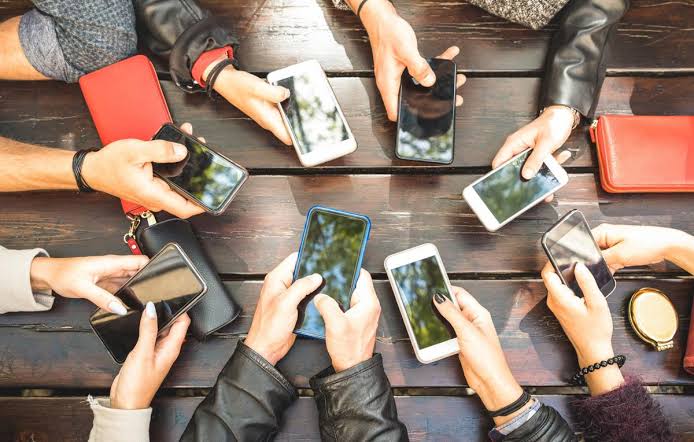Explore how smartphones impact social interactions and relationships, including their benefits and challenges. Learn about how smartphones enhance communication, support long-distance connections, and the potential for distraction and mental health concerns. Discover strategies for balancing digital and in-person interactions to maintain meaningful relationships.
The Impact of Smartphones on Social Interactions and Relationships
Smartphones have become an integral part of modern life, profoundly influencing how we interact with one another and maintain relationships. While these devices offer numerous benefits, including instant communication and access to information, they also have a complex impact on social dynamics. Understanding how smartphones affect social interactions and relationships requires examining both their positive and negative effects.
Enhancing Communication
One of the most significant benefits of smartphones is their ability to enhance communication. Smartphones allow for immediate and convenient interaction through calls, text messages, and various messaging apps. This instantaneous connectivity helps people stay in touch with friends, family, and colleagues, regardless of their physical location. The ability to share updates, photos, and videos in real-time strengthens connections and supports ongoing relationships.
Moreover, smartphones facilitate communication through social media platforms, enabling users to connect with a broader network of people. Platforms like Facebook, Instagram, and Twitter allow individuals to maintain relationships with acquaintances, share experiences, and participate in online communities. This expanded reach can lead to new friendships and opportunities for social engagement.
Supporting Long-Distance Relationships
For those in long-distance relationships, smartphones offer a crucial means of staying connected. Video calls, instant messaging, and social media enable couples to maintain their bond despite geographical separation. The ability to see and hear each other regularly helps to bridge the gap created by distance, making the relationship feel more personal and immediate.
Smartphones also assist in maintaining familial relationships across long distances. Families can stay connected through regular updates and shared media, which helps to preserve bonds even when members are not physically present. This constant connection can be particularly valuable for maintaining relationships with relatives who live far away.
Potential for Distraction and Disconnection
Despite their advantages, smartphones can also contribute to distraction and disconnection in social interactions. The constant presence of a smartphone can lead to decreased face-to-face interaction, as individuals may be more focused on their screens than on the people around them. This distraction can undermine the quality of in-person conversations and reduce the depth of social connections.
The phenomenon of "phubbing," where individuals prioritize their phones over interactions with others, is an example of how smartphones can negatively impact relationships. When people check their phones during conversations or social gatherings, it can create feelings of neglect or frustration in those who are being ignored. This behavior can strain relationships and hinder the development of meaningful connections.
Impact on Mental Health and Well-Being
The pervasive use of smartphones has also been linked to various mental health concerns, which can affect social interactions and relationships. For instance, excessive use of social media platforms can lead to feelings of inadequacy, anxiety, and depression. The constant exposure to curated and idealized portrayals of others' lives can create unrealistic comparisons and diminish self-esteem.
Additionally, the pressure to remain constantly connected can contribute to stress and burnout. The expectation to respond quickly to messages and stay updated with social media can create a sense of urgency and overload. This pressure can impact overall well-being and strain relationships, as individuals may struggle to balance their online and offline lives.
Influence on Relationship Dynamics
Smartphones have altered the dynamics of romantic relationships and friendships. In romantic relationships, constant connectivity can lead to issues related to privacy and trust. The ease of access to messages and social media profiles can create opportunities for misunderstandings or jealousy. Additionally, the temptation to compare one's relationship to others' online portrayals can introduce unrealistic expectations and dissatisfaction.
In friendships, smartphones can both enhance and complicate interactions. While they facilitate communication and coordination, they can also lead to misunderstandings or conflicts. For example, the tone of a message can be misinterpreted without the context of facial expressions or vocal inflections. This can lead to disagreements or strained relationships.
Navigating the Balance
To mitigate the negative effects of smartphones on social interactions and relationships, it is essential to find a balance between digital and in-person communication. Setting boundaries around smartphone use, such as designating specific times for checking messages or limiting phone use during social gatherings, can help maintain the quality of face-to-face interactions.
Encouraging mindful use of smartphones and fostering awareness of their impact on relationships can also contribute to healthier social dynamics. By being present and attentive in interactions, individuals can strengthen their connections and improve the overall quality of their relationships.
In conclusion, smartphones have a profound impact on social interactions and relationships, offering both opportunities and challenges. They enhance communication, support long-distance relationships, and facilitate social engagement. However, they also present risks related to distraction, mental health, and relationship dynamics. Understanding and navigating these effects can help individuals leverage the benefits of smartphones while minimizing their potential drawbacks, leading to more meaningful and fulfilling social connections.
